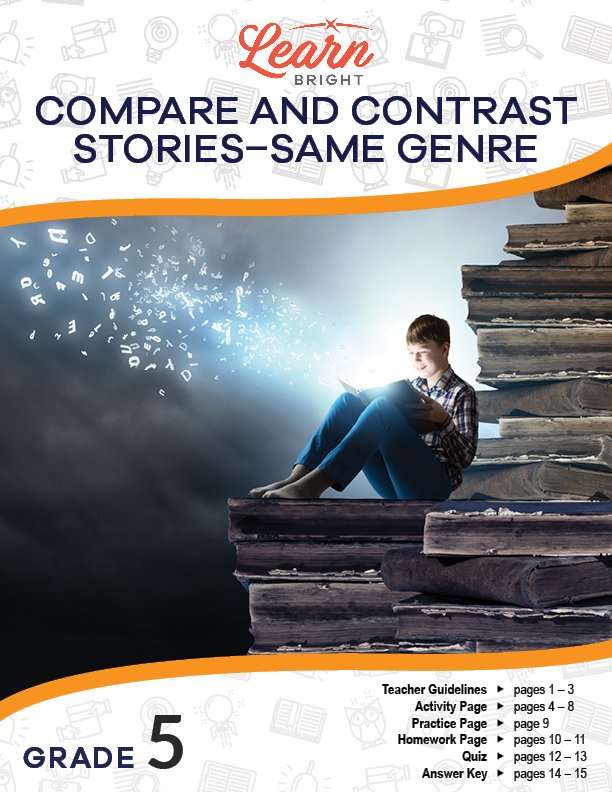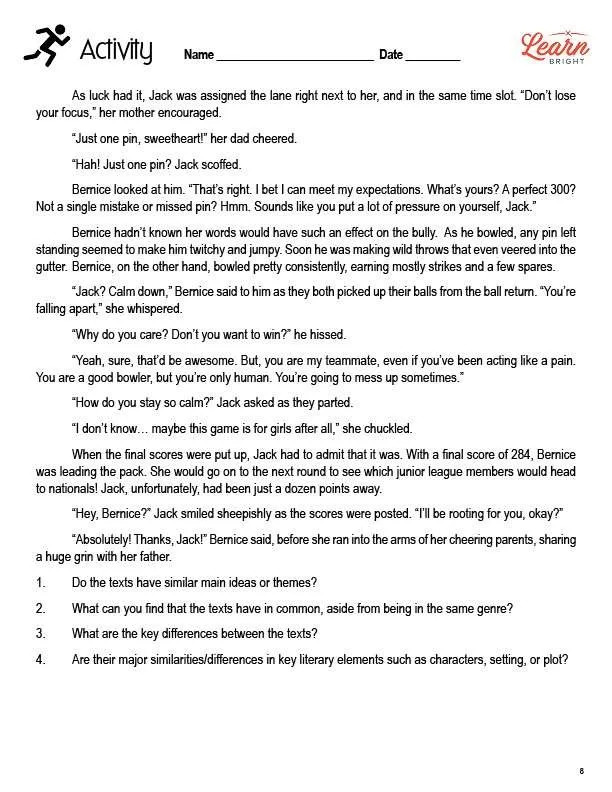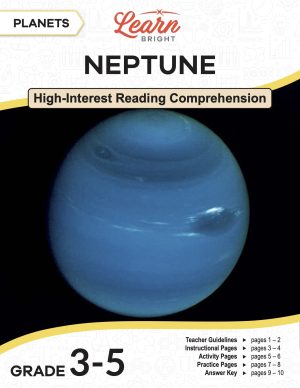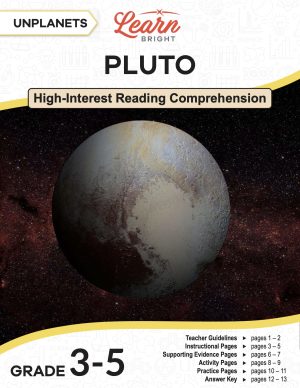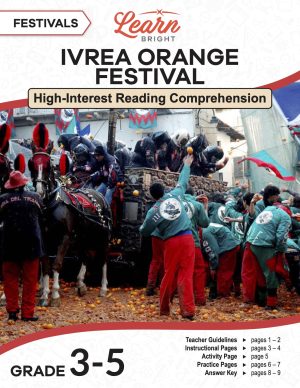Description
What our Compare and Contrast Stories – Same Genre lesson plan includes
Compare and Contrast Stories – Same Genre enables students to compare and contrast two stories from the same genre. The lesson reviews the difference between comparing and contrasting, and then reminds students to look at specific elements of the texts to compare, such as plot, characters and setting. At the end of the lesson, students will be able to compare and contrast stories in the same genre. This lesson is for students in 5th grade.
Classroom Procedure
Every lesson plan provides you with a classroom procedure page that outlines a step-by-step guide to follow. You do not have to follow the guide exactly. The guide helps you organize the lesson and details when to hand out worksheets. It also lists information in the orange box that you might find useful. You will find the lesson objectives, state standards, and number of class sessions the lesson should take to complete in this area. In addition, it describes the supplies you will need as well as what and how you need to prepare beforehand. The supplies you will need for this lesson are the handouts, paper, writing utensils, art supplies, and copies of the short stories for the Practice page.
Options for Lesson
The suggestions for this lesson provide a guide for which parts of the lesson you can administer on which of the four days scheduled for the lesson. For example, for day one, it suggests having students activate background knowledge, discuss essential questions on the anchor chart, work to complete two texts with a partner, and start the homework assignment.
Teacher Notes
The teacher notes page includes a paragraph with additional guidelines and things to think about as you begin to plan your lesson. It notes that comparing texts in the same genre allows students to practice analyzing and comparing themes, characters, motives, and more. It also notes that this skill is useful for standardized test preparation.
COMPARE AND CONTRAST STORIES – SAME GENRE LESSON PLAN CONTENT PAGES
The Compare and Contrast Stories – Same Genre lesson plan does not include any content pages. Rather, it provides a very detailed lesson plan, found on the three Classroom Procedure pages.
COMPARE AND CONTRAST STORIES – SAME GENRE LESSON PLAN WORKSHEETS
The Compare and Contrast Stories – Same Genre lesson plan includes four worksheets: an activity worksheet, a practice worksheet, a homework assignment, and a quiz. You can refer to the guide on the classroom procedure page to determine when to hand out each worksheet.
COMPARING STORIES ACTIVITY WORKSHEET
For the activity worksheet, students will compare and contrast the two short texts that are printed on the worksheet. Both of these stories are the same genre (realistic fiction/sports fiction). After they read the stories, they will answer the questions listed on the worksheet.
READ AND COMPARE PRACTICE WORKSHEET
The practice worksheet asks students to read and compare two pieces of literature in the same genre, Fresh Figs and The Huntsman’s Son. They will compare and analyze the texts and will also answer some specific reading comprehension questions about the stories.
COMPARE AND CONTRAST STORIES – SAME GENRE HOMEWORK ASSIGNMENT
For the homework assignment, students will compare and contrast two texts of their choice that are the same genre. They will then create a three dimensional Venn Diagram with visual representations of each element they’re comparing and contrasting. They will present their Venn Diagram to the class.
QUIZ
This lesson includes a quiz that you can use to test students’ understanding of the lesson material. For this quiz, students will first answer a few general questions about comparing texts. They will then read two pieces of text and answer reading comprehension and comparison questions about them.
Worksheet Answer Keys
This lesson plan includes answer keys for the activity worksheet, the practice worksheet, the homework assignment, and the quiz. If you choose to administer the lesson pages to your students via PDF, you will need to save a new file that omits these pages. Otherwise, you can simply print out the applicable pages and keep these as reference for yourself when grading assignments.

